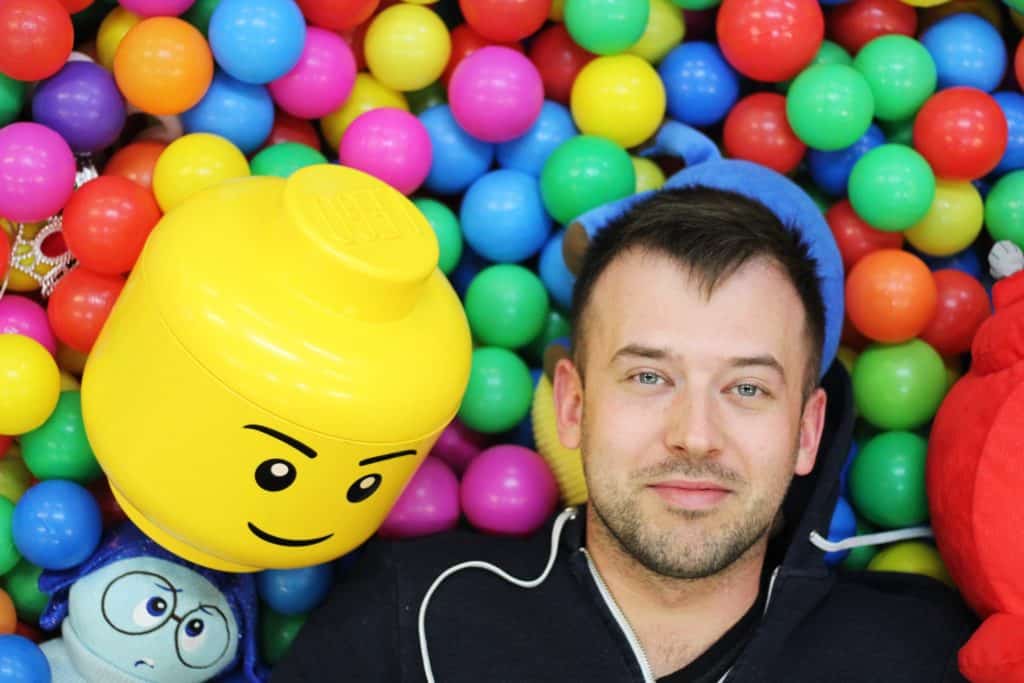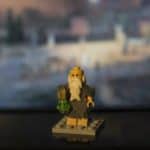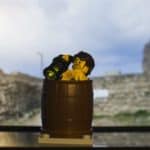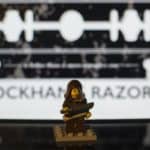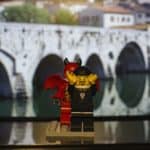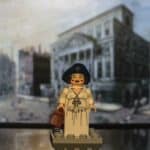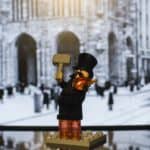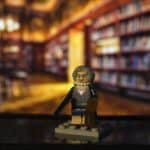World of przemek staroń
Toolbox: LEGO, games and books
Inspirations
I think that almost everything that surrounds us is amazing and can be shown or passed on to other people in many ways. You can do this with fancy methods like new technologies, virtual reality or augmented reality. But you can also use a torn piece of paper. This is a matter of a tool.
Sometimes it is minimalism, sometimes it is maximalism. I am a fan of implementation of various methods and tools – LEGO bricks, games, cards, puzzles, worksheets, literature. That’s how I am. I love gadgets, trinkets, books, I love constant exchange of knowledge and experiences, because we’re all students and teachers.
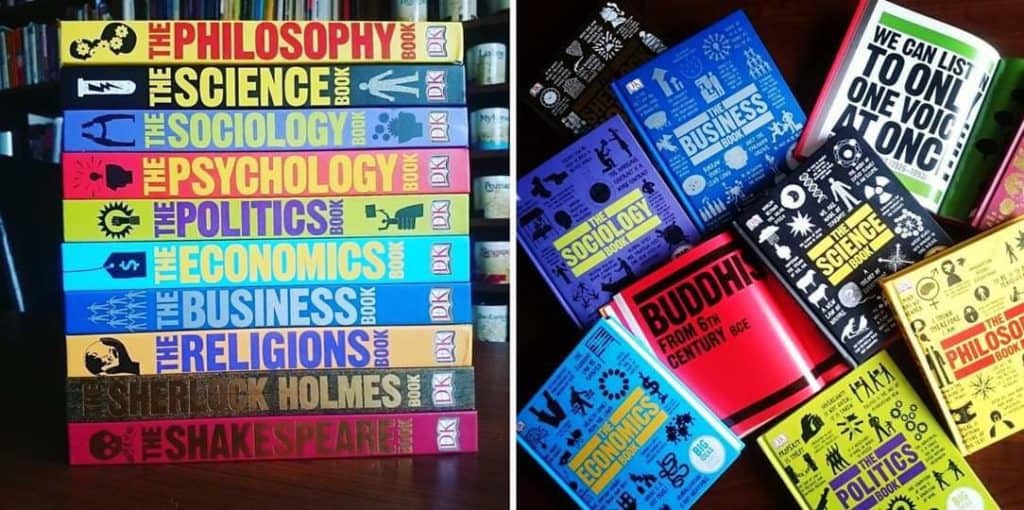
I use it all to enrich lessons, encourage students to gain knowledge, think critically and seek unconventional solutions.
LEGO and philosophy?
Someone once asked me “LEGO or Harry Potter?”. And what I was supposed to say? It’s almost like asking if you want to have a cookie or to eat a cookie.
Yes, LEGO is with me at all times.

I constantly construct new characters and their accessories: I choose haircuts, clothes, distinctive gadgets. There are figures of people I meet in my life and lately I started creating figures of philosophers – nearly 130 phiLEGOsophers!
LEGO – didactic tool?
With the help of these bricks students learn secrets of creative thinking and teamwork. LEGO bricks are the symbol of embodiment of educational contents and bringing people closer They develop mathematical, technical and mechanical abilities. On my philosophy lessons students, with the help of LEGO, create illustrations of various philosophical conceptions.
It allows them to better digest elements of the syllabus. During these ethics lessons students discover for example mechanisms of discrimination or biases. It often turns out that different situations are not as unambiguous as it seemed at the beginning. Lego blocks are a universal tool in my didactic work. I use them as a teacher, academic lecturer and trainer.
LEGO, seriously?
I recommend the Lego Serious Play method, which is used, among others, in business training. The player’s task is to build something out of a few blocks that can pass onto the next person. This is how metaphors are created – each participant considers why a given building is associated with creativity, cooperation and communication. Thanks to such fun it is much easier to stimulate involvement and development of creative thinking.
The dream school?
How do I imagine a perfect school? It is a combination of the LEGO headquarters, the Copernicus Science Centre and the House of Solomon, which Francis Bacon wrote about in “New Atlantis”. In the House of Solomon, various aspects of reality were studied experimentally. I would combine this research fervor with what a young person can experience – and not only that – at the Copernicus Science Centre. And all this would happen in the interiors of the LEGO headquarters. This is my dream creative hub, my dream school.
LEGO
Lego bricks have absolutely incredible power – because people of all ages are enthusiastic about them, they can be fantastically used for education. I use them in many ways, here’s my latest project – PhiLEGOsophers.
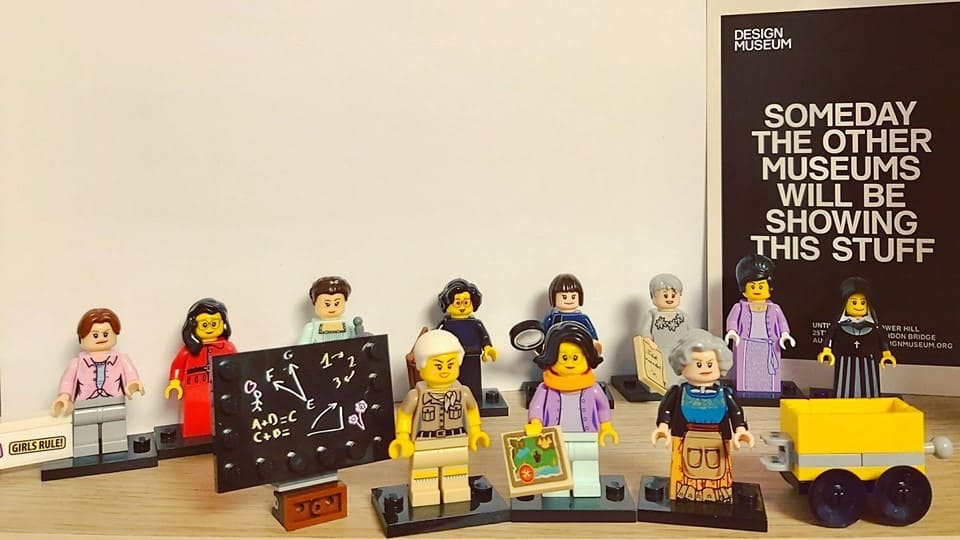
The history of philosophy is often presented as if it were created by men alone. And we also have many outstanding women thinkers in our history. Without them it is difficult to imagine the evolution of the human spirit. Here we see their particular representation, from the left: Judith Butler, Simone Weil, Hypathy from Alexandria, Izydora Dąmbska, Ayn Rand, Barbara Skarga, Simone de Beauvoir and Edith Stein, and in the front row: Ruth Benedict, Margaret Mead and Philippa Foot.
Defense against black magic
The world is beautiful, but there are many things in it that hurt others – stupidity, manipulation, fake news, indifference, discrimination. The fight against them sounds much better when it wraps itself up in Harry Potter’s own universe. That’s why I call it what the Hogwarts subject was called – a defense against black magic. Contemporary and real.
The key is to learn defensive spells – whether they are against false information or bad words or deeds. These defensive spells are in fact elements of knowledge about the world, which begins with knowledge about ourselves.
That is why I pass on elements of psychological knowledge in social media, and in class we practice distinguishing between material and non-judgmental arguments. And since they have their names in Latin, they really sound like Harry Potter’s spells: argumentum ad numerum! Ignoratio elenchi!
SUBJECT: Emotional laws (according to Nico H. Frijda) 🎓
Professor: Przemysław Staroń 🎓
LESSON 1
The first law is called the law of situational meaning or the “constitution of emotions”.
Banal yet fundamental: our emotions arise in response to various events. The source of pleasant emotions are events that fulfill our aspirations. The source of unpleasant emotions are events that threaten or harm our interests. In other words, there are no good or bad events in themselves. It all depends on how the event is related to our aspirations.
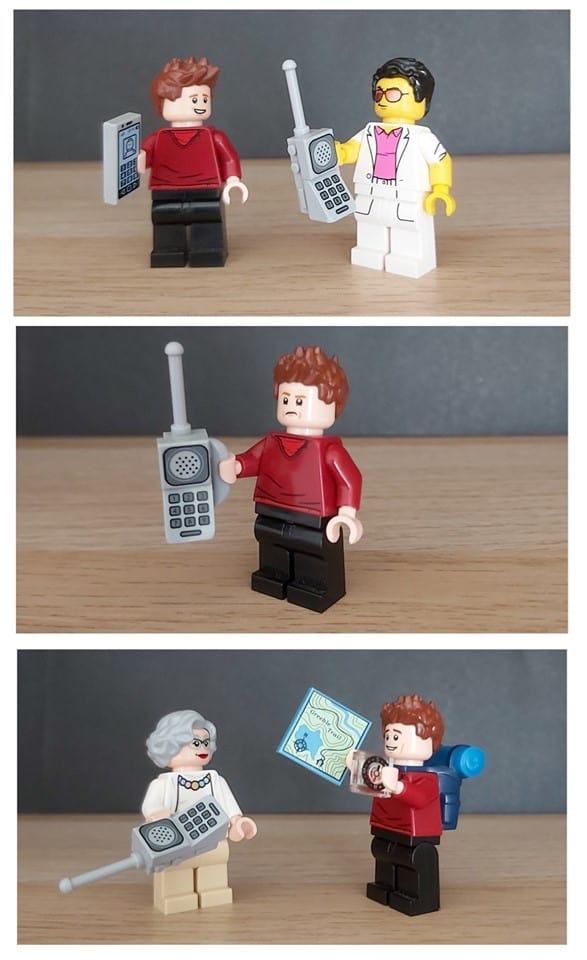
LESSON 2
The second law is called the law of engagement.
Our emotions are the response to events that are important to us, such as those related to our goals. Emotional meaning is given to events according to the key of engagement – the greater the engagement on our side, the stronger the emotions.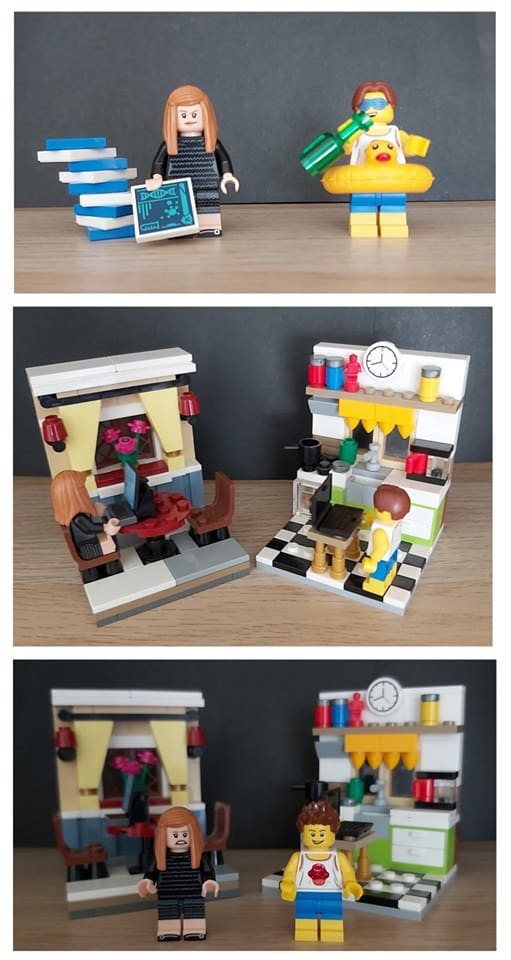
➡️ In the first picture we see two people who are about to graduate. The first one knows perfectly well that the Baccalaureate is the key to her plan: to finish medicine and become a doctor. The second person takes the exam because everyone takes it, but still knows that he will work in his father’s company and inherits everything from him, regardless of his education.
➡️ In the second picture, we see that each of these people is checking the results of the baccalaureate online. The first one is under a lot of stress, the second one feels like buying cheap scratch cards at the lottery. It will soon turn out that each of them received the same result.
➡️ In the third picture you can see the first person, who is broken – she put so much effort into it, devoted so much time to it, and has such a poor result. The second person laughs that suckers learned so much and have the same result, and goes swimming in the pool, you can say that it flows down him like water off a duck’s back 😉
❗Summary ❗
The more involved we are in something, the greater the emotions that accompany it.
LESSON 3
The third law is called the law of directly perceived reality.
Events that evoke emotions in us must be perceived as REAL. Their intensity corresponds to the degree of feeling of this reality. Emotions are caused by what a person perceives as real, even if it is not.
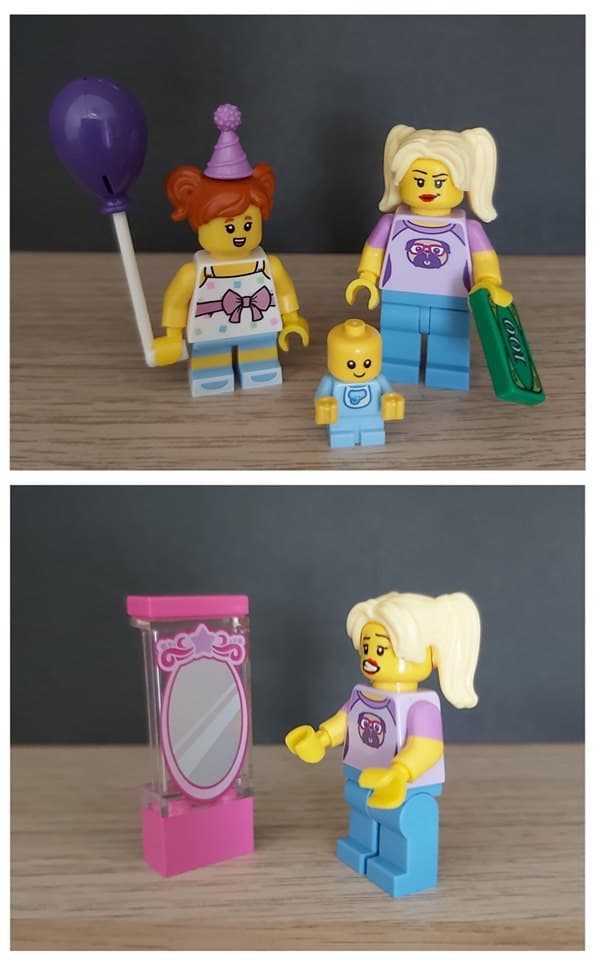
➡️ In the first picture, a young mother receives monthly social benefit of 500 PLN. She is not afraid to hear what her friends say about the fact that the economy will not be able to bear it for a long time and the children will have to pay back what she got for it. There is no feeling that this is real.
➡️ In the second picture, the same mother stands in front of the mirror and feels disgust, sadness and anger because she is fat. In fact, she is not, but has a distorted perception of her body resulting from the unrealistic image of the female figure she sees in social media. She perceives it as absolutely real, even though it is not real, and it evokes strong emotions in her.
❗ Summary ❗
For our emotions, it’s not the objective reality that counts. What counts is what we perceive to be real.
LESSON 4
The fourth law is called the law of change of habit and comparative feeling..
The assessment of an event depends on the system of reference in which the event takes place. The greater the change from the expected conditions, the stronger the emotion.
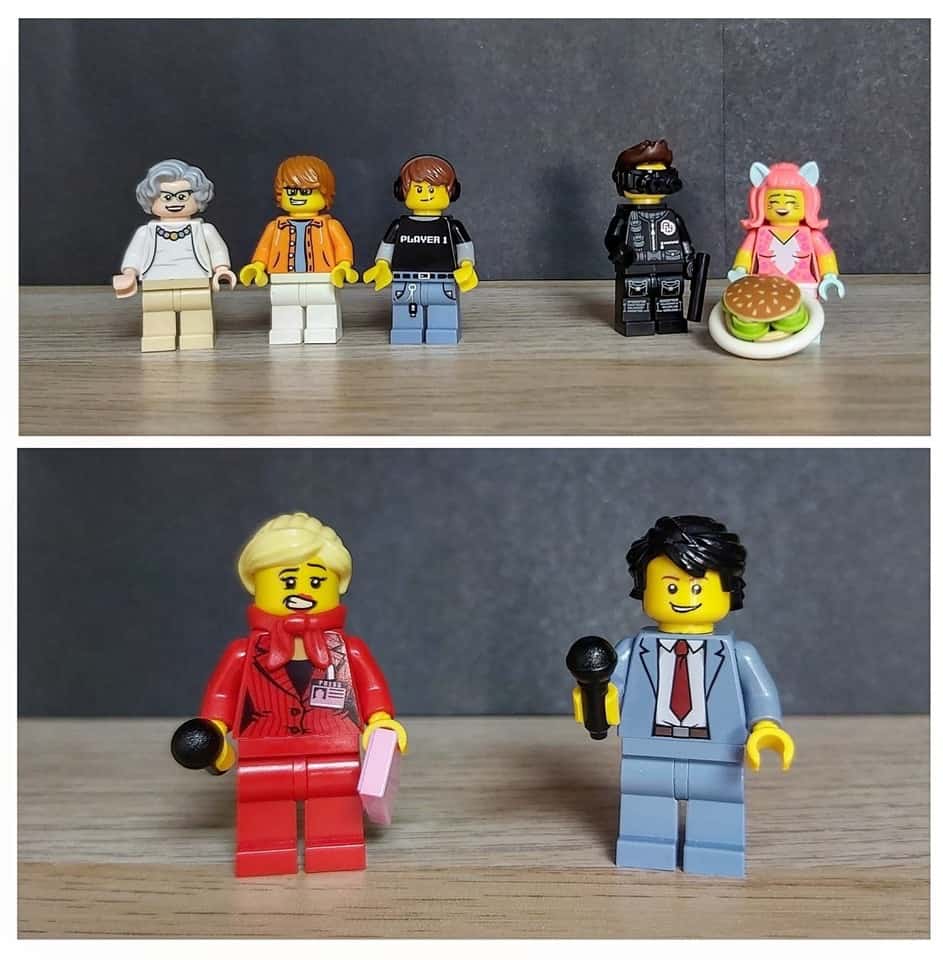
➡️ There are two situations in the top picture: on the left there is a boy who came out. He thought that his grandmother and his friend would react very badly. Meanwhile, he got great acceptance from them. He feels very strong joy. On the right is a singer who has been kidnapped. She expects torture, but the kidnapper brings her a very tasty meal. She feels great gratitude and sympathy for him.
➡️ In the lower picture we see two people who have become journalists. The woman on the left hoped that it would be the work of her dreams, that she would feel fullfilled and earn a lot of money, but it turned out that nothing of it. She is very disappointed, because she expected something completely different. The man on the right thought that the work of a journalist would be boring and poorly paid, and surprised positively – it is interesting and means a good salary. He feels joy and fulfillment.
❗ Summary ❗
It is not so much events that are important as our expectations in relation to events.
LESSON 5
The fifth law is called the hedonistic asymmetry law.
This law indicates that pleasure disappears quickly – with the degree of satisfaction. However, sadness can last for a long time. You can get used to events that arouse pleasant emotions, but you will not get used to events that arouse unpleasant emotions.
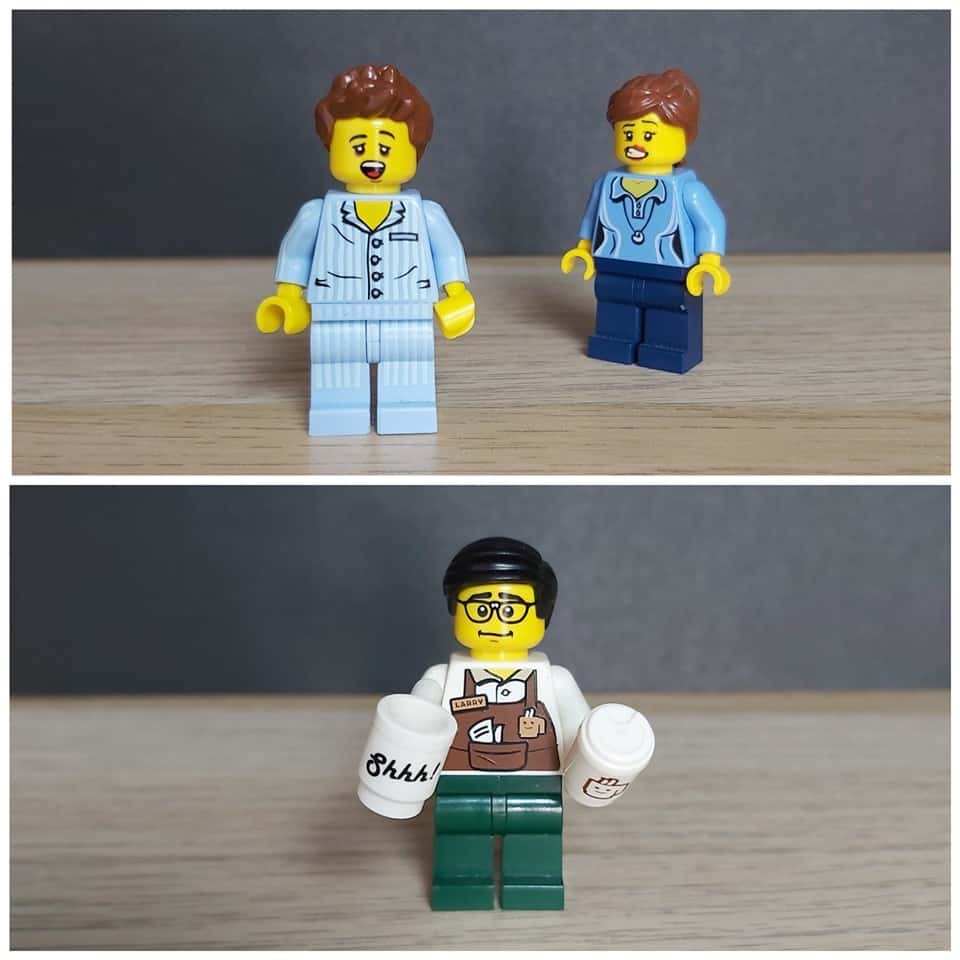
➡️ The top picture shows a woman looking at her partner. He used to be the center of the world for her, she was crazy about him, and now she feels boredom, disappointment, general ick.
➡️ In the bottom picture we see a guy who works in a café. This is not the job of his dreams, on the contrary – since the beginning he has worked there, because he had no options elsewhere. He is frustrated and the frustration does not decrease with the passage of time.
❗ Summary ❗
This lesson needs a longer comment here. This law – nomen omen – can seem very sad. Therefore, it is very important to understand it well: it states that at the level of PURE BIOLOGY we are not able to enjoy contact with a specific stimulus all the time. We get used to it and the so-called habituation takes place – the extinction of the reaction to the stimulus. Beloved ice cream eaten on the fifth day stops to thrill, the excitement of our partner after a long time begins to drop.
But beware: we are simply talking about our biology. We talk about what happens on its own. However, we are beings that are able to surpass biology. Therefore, if we stop mindlessly using a certain pleasure, reflect on the situation, change it, paradoxically we can start to gain even more pleasure e.g. in a long-term relationship – pleasure of a much larger format, pleasure from a higher level. Research confirms this 🙂 The same applies to annoyance – if we subject the source of reflection to it, start using our imagination actively, trying to reinterpret it, then we can transcend the biology of which the law of hedonistic asymmetry speaks.
…to be continued.
We don’t teach those who know. We don’t teach those who don’t know either. We teach these, who don’t know that they know.
— Socrates
What can we do together?
